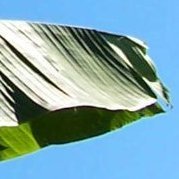What To Do With The Baht?
-
Recently Browsing 0 members
- No registered users viewing this page.
-
Topics
-
-
Popular Contributors
-
-
Latest posts...
-
1
If You Could Live Anywhere in the World, Would You Still Choose Thailand?
Dont forget age and health -
82
Community Pattaya Restaurant Owner Defends Sexy Attire as Marketing Strategy Amid Hygiene Backlash
She's implying that she came up with this idea, but the scantily clad food vendor trend has been going on for some time now. -
31
Good Days and Bad Days
Sex, Good food, Good movie, Good book, And years back: Good climb, Good hike, Good dive, Good flight.. Forgot about work, too long ago. -
3
Leftist Oligarchs demand Dems “Get Shot ” for Democracy!
“Domestic terrorism in the United States involves acts dangerous to human life that violate criminal laws and appear intended to intimidate or coerce a civilian population or influence government policy. These acts are distinct from international terrorism as they occur within the U.S. without foreign direction. The threat of domestic terrorism is persistent and multifaceted, with actors often radicalizing online and mobilizing quickly”. Google Ai -
122
Putin is Scum, But Ukraine is Not a Country
What exactly did you mean by this link? -
342
Immigration Thailand Digital Arrival Card. TDAC
Contract answer: "Yes sir, I did it myself"
-
-
Popular in The Pub



.thumb.jpg.82631abb512ae61a745d964452c5b1b9.jpg)










Recommended Posts
Create an account or sign in to comment
You need to be a member in order to leave a comment
Create an account
Sign up for a new account in our community. It's easy!
Register a new accountSign in
Already have an account? Sign in here.
Sign In Now